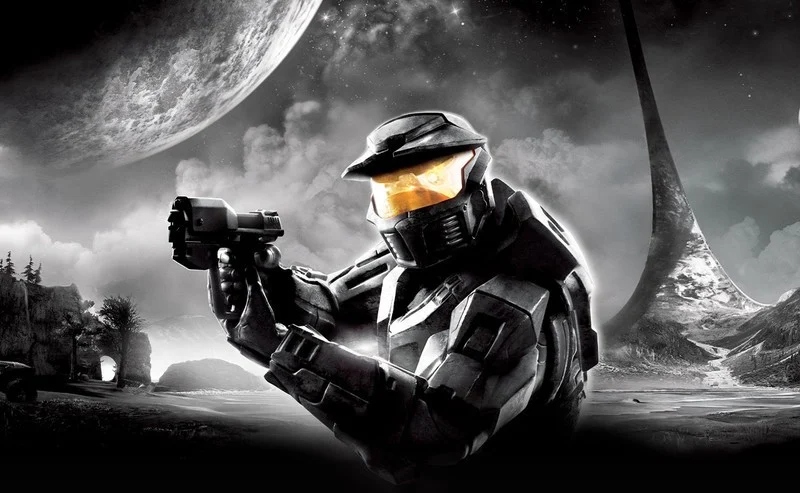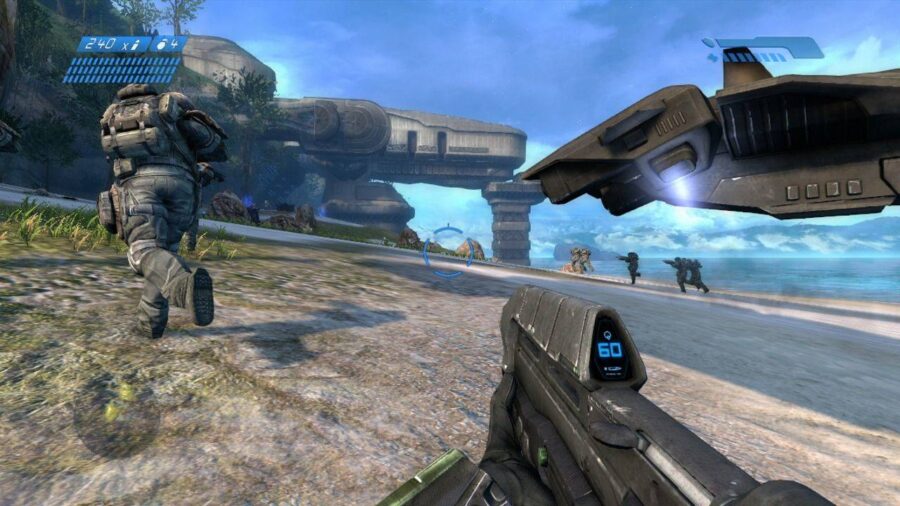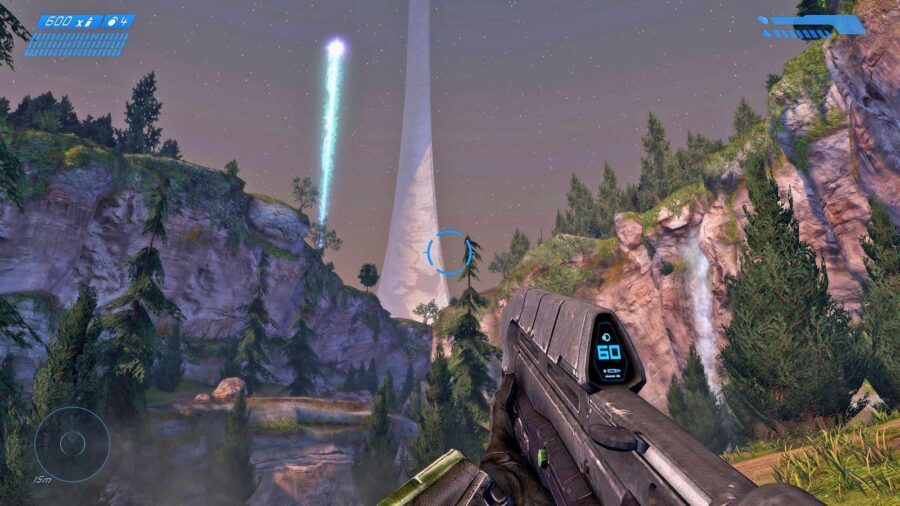The Best Halo Game Changed The FPS Genre
It changed everything!
This article is more than 2 years old

The highly anticipated Halo Infinite, the newest addition in the groundbreaking Halo franchise, was branded as “the best Halo game of the decade” immediately upon its release, some two months ago. But the sixth mainline installment in the Halo franchise and the third entry in the “Reclaimer Saga” is far from being the best Halo game out there. According to Metacritic rating, the recently-released Halo Infinite is, in fact, by whole 10 points (on a 1-100 scale) behind the absolute best Halo game — the original Halo: Combat Evolved video game from 2001.
Of course, newer games have better graphics and are generally more immersive, thanks to the advancements in gaming technology. However, Halo: Combat Evolved had more than great graphics for its time. The game was a critical and commercial success, often praised as one of the best video games ever made. In fact, the best Halo game was so groundbreaking that it changed the way first-person shooter video games are played, even to this day, and led to labels such as “Halo clone” for games that tried to replicate its success. But what makes Halo: Combat Evolved better than its successors?

When Halo: Combat Evolved was released in 2001 for the original Xbox console, it created a foundation for the future of first-person shooter video games. The game is credited with the modernization of the FPS genre, achieved through its subtle but vastly influential innovations that have been borrowed by countless video games ever since their introduction. These innovations not only influenced the future of the gaming world and the way FPS games are played, but they are often credited as the main reason for Halo‘s success and, by extension, the success of its native console — the original Xbox console.
The game felt incredibly natural on the Xbox console, especially with a skilled player on the controller, as it featured all the hallmarks of great gaming: a compelling storyline, fantastic gameplay, and the featured release for a brand-new console that would become Sony’s main competitor. The campaign is, by far, the best aspect of Halo: Combat Evolved. It introduced Master Chief, a superhuman soldier fighting a war against an alien faction called the Covenant. The story revolves around Halos, seven ring-shaped artificial worlds created by the Forerunners, to kill all sentient life within their range.

At the beginning of the best Halo game, players find themselves crashing on one of these Halo worlds and discover that the rings are more than just remnants of old galactic civilizations. They’re the weapons made to fight off an intergalactic parasite called the Flood, which feeds on sentient life, including humans and the Covenant alike. Unfortunately, the Flood had no natural enemies but starvation, which is facilitated by killing its food — all the sentient organisms in the galaxy — via the Halo Array. In the end, of course, Master Chief fights off the Flood and the Covenant and destroys the ring, but in a way that allows for a sequel game.
But the captivating story was just that — a good story. But the elements that contributed to its greatness are more of a visual nature. The original game’s atmosphere was dark and mysterious, and players had to use the flashlight almost throughout the entire game. This dark and mysterious setting, paired with the use of a flashlight, wasn’t intentional by design but rather a fortunate shortcoming of 2001 graphic engines. Still, they created a thrilling atmosphere, in which combat was truly exhilarating and extremely fun.
The best Halo game was remastered in 2011 with fresh graphics and motion capture cinematics. Still, the intense lighting and higher saturation brought by Xbox 360’s ATI Xenos GPU ruined the original’s grim visuals. Unfortunately, it takes away from experience, but those who don’t have access to the original game can still toggle old graphics in the remastered version. It’s slightly less sightly if you’re into graphical fidelity, but the gaming experience is much more intense.

The opponents were fantastic. Besides fighting a wide variety of Covenant opponents, which were strategically placed out, so players had to strategize to kill them effectively, there was the Flood and the sentient robot. The introduction of Flood in Mission 6 further intensified the gaming experience, as it could revive the dead, and robots made everything even harder, as they were primarily created to fight the Flood. But they also fought the players once the Flood was eliminated.
In short, Halo: Combat Evolved is one of the most iconic video games ever made since it revolutionized the FPS genre — earning a page or two in the gaming history books. Of course, the elitist Call of Duty players may brag about the fruitfulness of their favorite franchise. Still, they’d do well to remember that many gameplay elements within their favorite franchise, like regenerating health system, were borrowed from Halo: Combat Evolved. In fact, the best Halo gamewas to the gamers of the 2000s, the same Super Mario was for gamers in the ’80s — a gateway into the genre, a foundation upon which everything great was ever built, and an unavoidable piece of gaming history.
Besides influencing the entire FPS genre, the success of Halo: Combat Evolved spawned a whole franchise with more than 15 entries, with Halo Infinite being the latest, and a developing television series. Thanks to the fantastic design, innovations implemented by its developer, and a compelling story, Halo: Combat Evolved is more than just the best Halo game; it’s one of the best and most important games ever made.










